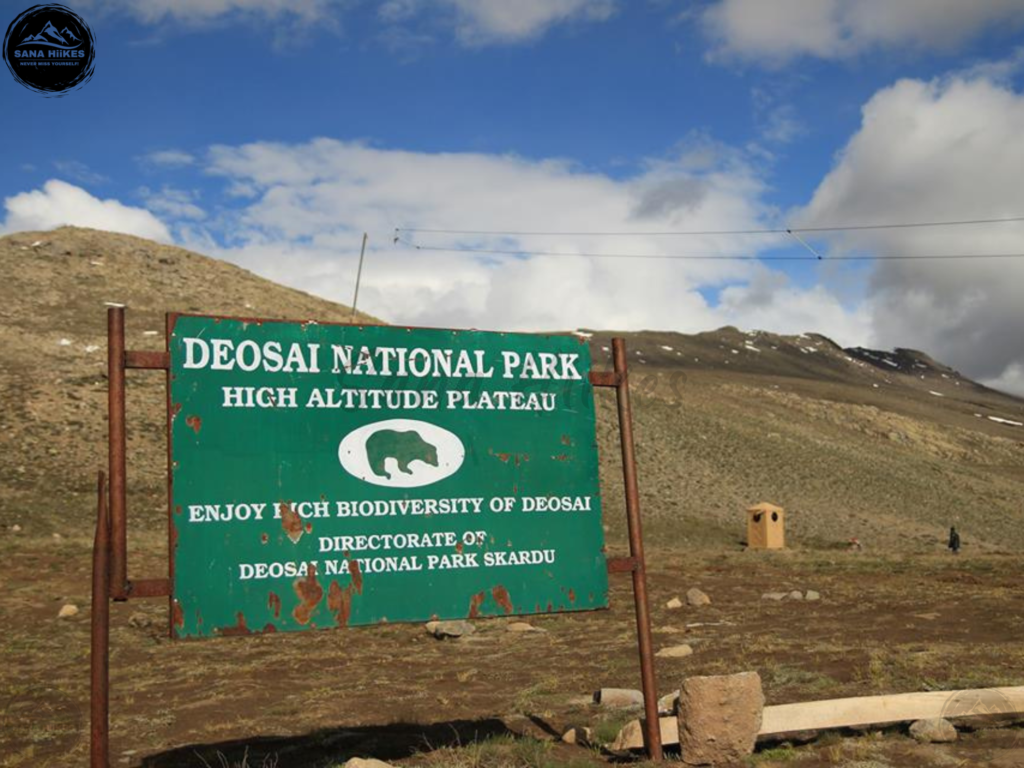
Introduction to Deosai National Park
Deosai National Park, often referred to as the “Land of Giants,” is a breathtaking high-altitude plateau nestled in the northern regions of the Indian subcontinent. Located in the Himalayas, this pristine wilderness is renowned for its vast rolling meadows, snow-capped peaks, and an abundance of unique wildlife. Sitting at an average elevation of over 4,000 meters above sea level, Deosai is among the highest national parks in the world, offering an untouched and surreal landscape that captivates travelers, nature enthusiasts, and adventure seekers alike.
One of the most notable inhabitants of Deosai National Park is the Himalayan brown bear, a rare and endangered species that finds refuge in these remote landscapes. The park serves as a crucial conservation site for these majestic creatures, along with other wildlife such as the Tibetan wolf, red fox, Himalayan ibex, and golden marmot. Birdwatchers also flock to the region to spot migratory birds like the golden eagle, the Himalayan griffon vulture, and the elusive black-necked crane.
Sheosar Lake, one of the most picturesque attractions in the park, is a high-altitude lake that mirrors the surrounding snow-covered peaks, creating a breathtaking reflection. The lake, known for its crystal-clear waters, adds to the mystical charm of Deosai, making it a must-visit spot for trekkers and nature lovers. Apart from its natural beauty, Deosai National Park also holds cultural and historical significance. The name “Deosai” translates to “The Land of the Giants” in local folklore, reflecting ancient tales and myths associated with the region. The park has long been a place of intrigue, visited by nomadic tribes and travelers navigating the rugged Himalayan terrain. For adventure enthusiasts, Deosai offers incredible trekking and camping opportunities, allowing visitors to immerse themselves in the raw beauty of the Himalayas.
Quick Facts

1. How to Reach Deosai National Park
Deosai National Park, known as the “Land of Giants,” is a breathtaking high-altitude plateau located in the Union Territory of Ladakh, India. Famous for its vast grasslands, stunning landscapes, and diverse wildlife, the park is home to rare species like the Himalayan brown bear, Snow Leopard, and Tibetan wolf. If you are planning to visit this untouched paradise, here’s a detailed guide on how to reach Deosai National Park.
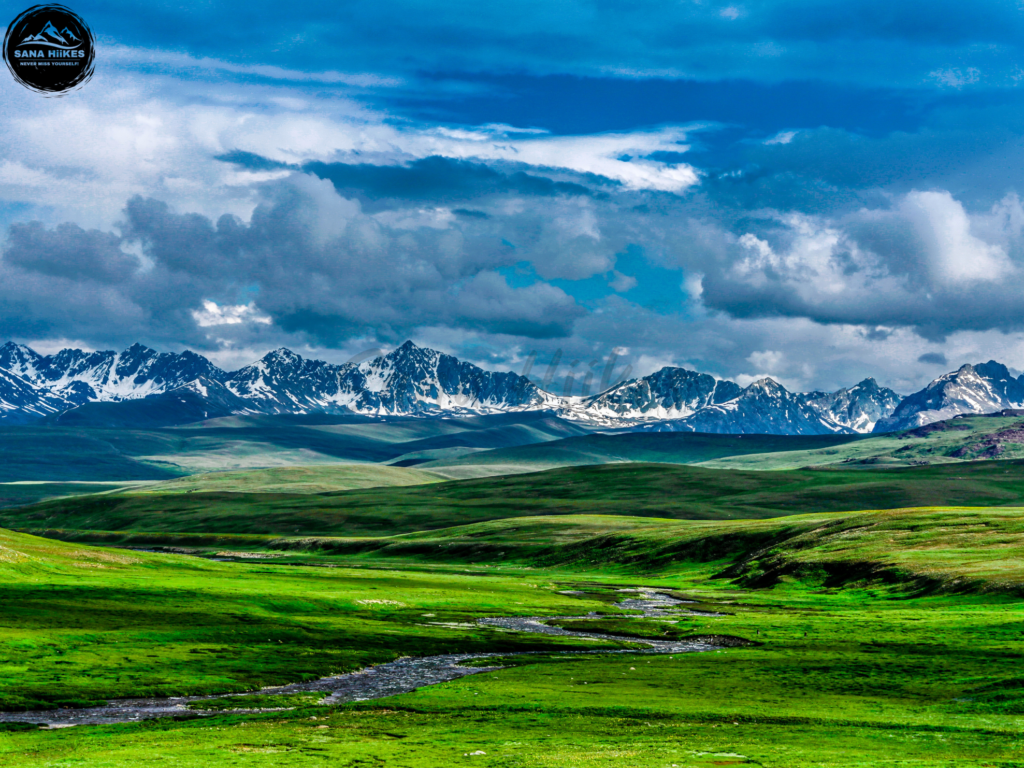
By Air
The fastest way to reach Deosai National Park is by air. The nearest airport is Kushok Bakula Rimpochee Airport in Leh, which is well connected to major Indian cities like Delhi, Mumbai, Srinagar, and Chandigarh. Airlines operate regular flights to Leh, making air travel the most convenient option.
Once you arrive at Leh Airport, you can hire a private taxi or rent a bike to reach Deosai National Park. The journey from Leh to Deosai is around 350 km, taking approximately 10–12 hours by road, depending on weather and road conditions. Due to high-altitude terrain, it is advisable to spend a day in Leh to acclimatize before proceeding further.
By Road
Deosai National Park is well-connected by road from different regions of Ladakh and nearby states. However, due to extreme weather conditions, the roads remain open only from May to September. Below are the most common routes:
1. From Leh
- Distance: 350 km
- Travel Time: 10-12 hours
- Route: Leh → Kargil → Dras → Gultari → Deosai National Park
This is the most popular and scenic route, passing through some of the highest motorable roads in the world. It is recommended to hire a 4×4 vehicle or a sturdy bike due to rough terrain.
2. From Srinagar
- Distance: 450 km
- Travel Time: 14-16 hours
- Route: Srinagar → Sonmarg → Dras → Kargil → Gultari → Deosai National Park
Traveling from Srinagar is another option for those coming from Jammu and Kashmir. The road offers mesmerizing views of the Zojila Pass and Dras Valley. However, travelers should check road conditions before planning their trip.
3. From Manali
- Distance: 700 km
- Travel Time: 20-24 hours (split over 2 days)
- Route: Manali → Keylong → Leh → Kargil → Gultari → Deosai National Park
This is a longer but adventurous route for travelers who want to explore multiple high-altitude regions before reaching Deosai.
Once in Gultari or Kargil, the final stretch to Deosai National Park requires off-road driving, making it essential to hire an experienced driver or a guided tour.

By Train
There is no direct railway connection to Deosai National Park due to its remote location. The nearest major railway station is Jammu Tawi Railway Station, which is about 850 km away. From Jammu, you can travel to Leh or Srinagar by road and then continue your journey to Deosai. The train journey is an option for those who prefer a mix of rail and road travel.
Trekking to Deosai National Park
For trekking enthusiasts, reaching Deosai National Park on foot is a thrilling experience. There are several trekking routes that start from:
- Zanskar Valley (Chadar Trek in winter leads close to Deosai)
- Dras Valley (Known for its lush meadows and war memorials)
- Kargil Region (Adventurous treks through rugged landscapes)
Trekking is an excellent way to experience the untouched beauty of the Himalayas. However, proper acclimatization, gear, and an experienced guide are recommended.
Travel Tips
- Best Time to Visit: May to September, when the roads are open and the weather is pleasant.
- Permit Requirements: No special permits are required for Indian tourists, but foreign visitors need an Inner Line Permit from Leh authorities.
- Altitude Considerations: Deosai is a high-altitude region (3,500–5,600 meters). Spend a day in Leh or Kargil to acclimatize.
- Transport Options: Renting a 4×4 vehicle from Leh or Srinagar is the best way to navigate the rugged terrain.
Visiting Deosai National Park is a once-in-a-lifetime experience. Whether you travel by road, air, or trek through its scenic trails, the journey is as mesmerizing as the destination itself.
2. Best Time to Visit Deosai National Park
Deosai National Park, the highest plateau in the world, is located in the Union Territory of Ladakh, India. Spanning vast grasslands, snow-capped peaks, and pristine rivers, this breathtaking wilderness is home to unique wildlife, including the Himalayan brown bear, Tibetan wolf, and snow leopard. However, due to its extreme altitude and harsh weather conditions, Deosai National Park is not accessible year-round. The best time to visit depends on what you wish to experience—whether it’s lush meadows, blooming wildflowers, or snow-covered landscapes.
Ideal Visiting Season: May to September
The best time to visit Deosai National Park is from May to September, when the snow melts, the roads become accessible, and the region comes alive with vibrant flora and fauna. Each month offers a unique experience, making it essential to plan your visit based on your preferences.
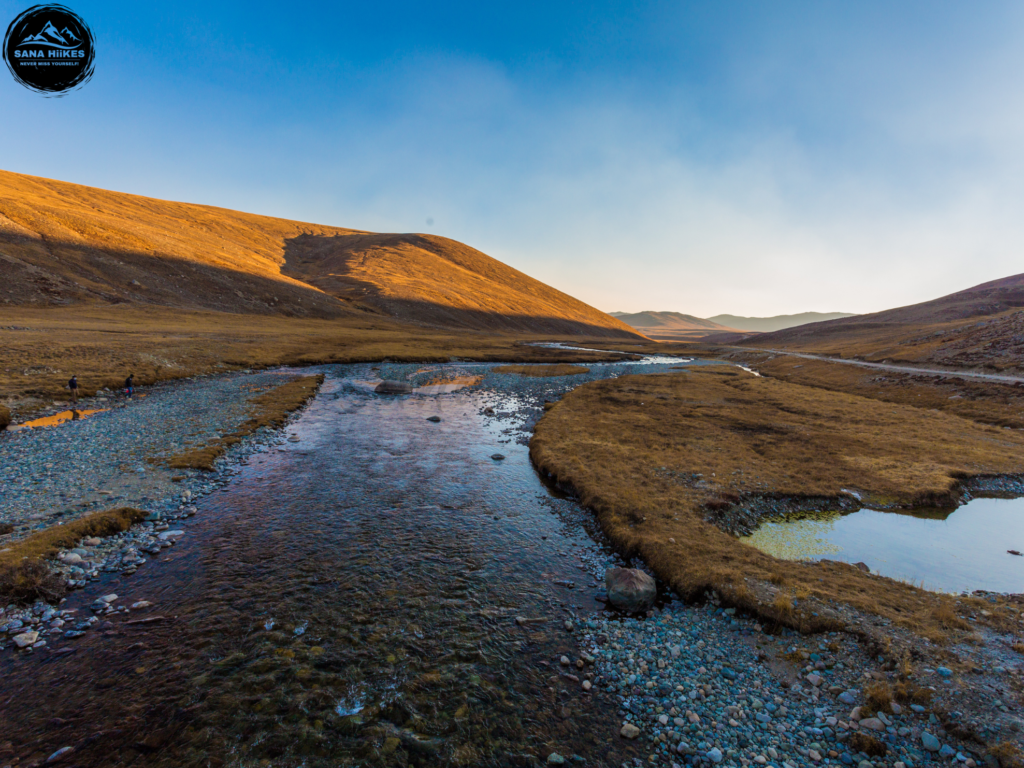
May- June: The Awakening of Deosai
- Weather: Temperatures range from 5°C to 15°C during the day, while nights can be freezing -5°C to -10°C.
- Landscape: The snow begins to melt, revealing patches of green grass and flowing rivers. However, remnants of winter snow still linger.
- Wildlife: The Himalayan brown bears start emerging from hibernation, making it a great time for wildlife enthusiasts to spot these majestic creatures.
- Travel Conditions: Some roads may still be blocked by snow, and accessibility can be challenging, especially in early May. A 4×4 vehicle is highly recommended.
If you enjoy solitude and raw, untouched landscapes, May to early June is an ideal time to visit. However, expect chilly temperatures and limited facilities.
Mid-June–August: Peak Summer and Full Bloom
- Weather: The most pleasant time to visit, with daytime temperatures ranging from 10°C to 20°C. Nights remain cold, around 0°C to 5°C.
- Landscape: The park transforms into a lush green paradise with endless meadows of wildflowers, including blue poppies, buttercups, and forget-me-nots.
- Wildlife: This is the best time to spot diverse fauna, including the Himalayan marmot, red fox, Tibetan wolf, and even elusive snow leopards. Birds like the golden eagle and lammergeier soar over the vast landscapes.
- Travel Conditions: Roads are in their best condition, making it the most accessible time to visit Deosai. Trekking routes also open up for adventure seekers.
This period is ideal for photographers, trekkers, and nature lovers who wish to experience Deosai in its full glory.
September: The Onset of Autumn and Stunning Landscapes
- Weather: Temperatures drop significantly, with daytime temperatures around 5°C to 15°C, while nights become extremely cold -5°C and below.
- Landscape: The greenery starts fading, and golden hues take over the meadows, offering breathtaking autumn scenery.
- Wildlife: Animals begin preparing for hibernation, but this is still a great time for wildlife spotting. Migratory birds can also be seen before they leave for warmer regions.
- Travel Conditions: Roads remain open but can become unpredictable due to early snowfall in late September.
September is perfect for those who prefer fewer crowds and want to witness Deosai’s stunning transition from summer to winter.
Winter – October to April: Not Recommended
- Weather: Deosai is covered in thick snow, with temperatures dropping to -20°C to -40°C in peak winter months.
- Landscape: A winter wonderland with frozen rivers, snow-covered mountains, and an eerie silence.
- Wildlife: Most animals go into hibernation, except for a few resilient species like snow leopards and Tibetan wolves.
- Travel Conditions: Extremely difficult as roads remain completely blocked by heavy snowfall, making Deosai inaccessible for regular travelers.
Visiting in winter is only recommended for extreme adventurers with proper gear, experience, and professional guidance. Special snow expeditions can be arranged, but they require permits and expert supervision.
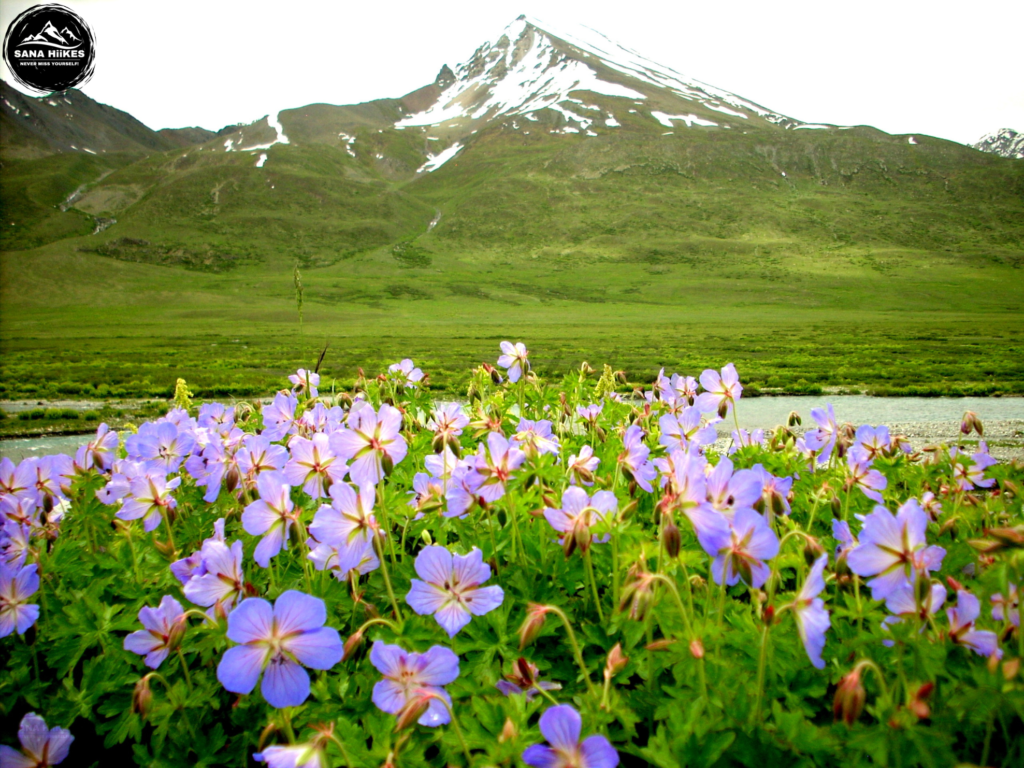
Travel Tips for Visiting Deosai National Park
- Acclimatization: Due to the high altitude (3,500 m–5,600 m), acclimatization in Leh or Kargil for a day or two is recommended before traveling to Deosai.
- Best Time for Photography: June to August for lush landscapes and wildlife; September for golden autumn colors.
- Trekking and Camping: July to September is the safest and most enjoyable time for trekking and camping.
- Essential Gear: Warm clothing, waterproof jackets, sturdy trekking shoes, and high-SPF sunscreen are must-haves.
- Permits: While no special permits are required for Indian travelers, foreign tourists need an Inner Line Permit to visit Deosai.
3. Things to Do and Must-Visit Places
Deosai National Park is a stunning high-altitude plateau in Ladakh, India. Spanning vast meadows, pristine rivers, and rugged mountains, it offers breathtaking landscapes and diverse wildlife, making it a paradise for adventure seekers, nature lovers, and photographers. If you’re planning a trip to Deosai, here are the top things to do and must-visit places that you shouldn’t miss.
Top Things to Do in Deosai National Park
1. Wildlife Spotting and Birdwatching
Deosai is home to a variety of rare and exotic wildlife, including the Himalayan Brown Bear, Snow Leopard, Red Fox, Tibetan Wolf, and Himalayan Marmots. Wildlife enthusiasts can explore the region in search of these magnificent creatures. The park is also a haven for birdwatchers, with species like the Golden Eagle, Lammergeier, and Black-necked Crane soaring over the vast landscapes.
2. Trekking and Hiking
Deosai offers several scenic trekking routes that allow you to immerse yourself in the raw beauty of the plateau. Popular treks include:
- Deosai Plains Trek – A moderate trek through the vast meadows of Deosai, offering panoramic views of the snow-capped mountains.
- Sheosar Lake Trek – A must-visit for trekkers, leading to one of the most beautiful high-altitude lakes in the region.
- Kala Pani and Bara Pani Trek – These two rivers provide stunning trekking trails with breathtaking landscapes.
3. Camping Under the Stars
Camping in Deosai is an unforgettable experience. The high-altitude plains offer clear night skies with millions of twinkling stars, making it one of the best places in India for stargazing. The tranquility of the region, combined with the beauty of the Milky Way, makes camping here a dream for nature lovers.
4. Photography and Landscape Viewing
With its rolling meadows, alpine flowers, snow-capped mountains, and pristine rivers, Deosai is a photographer’s paradise. Whether capturing wildlife, sunrise over the Sheosar Lake, or the golden hues of the grasslands in autumn, the park provides countless breathtaking frames.
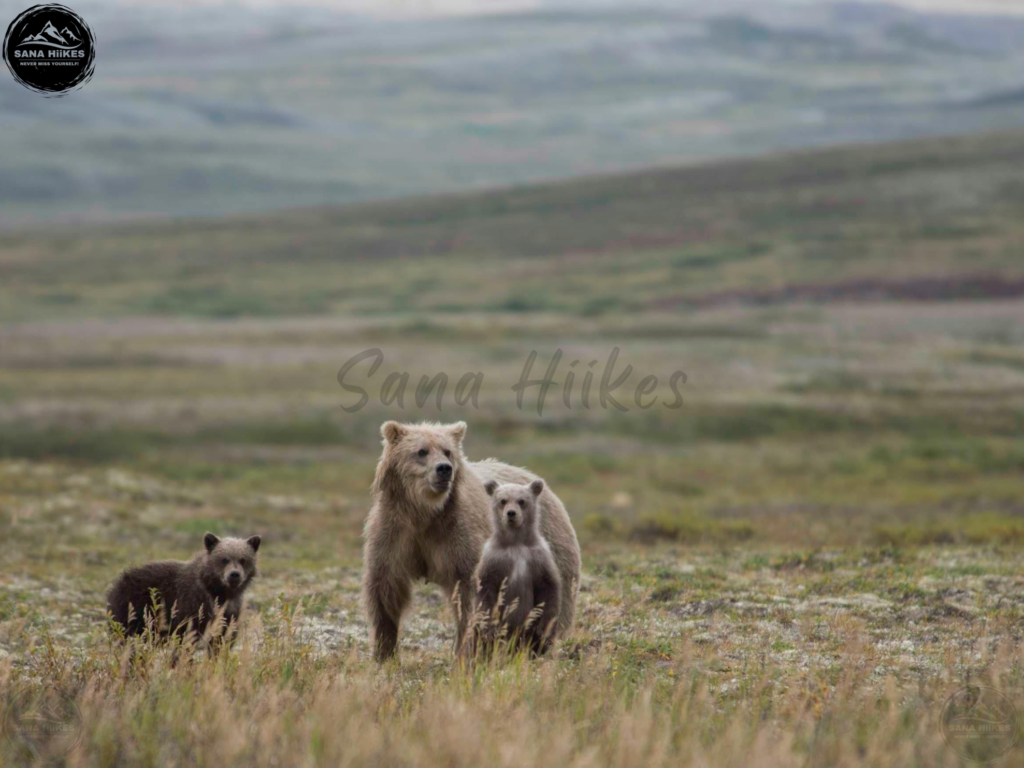
5. Off-Road Jeep Safari and Motorbiking
Exploring Deosai on a jeep safari or motorbike is an exhilarating experience. The rugged terrain and unpredictable weather make it an adventure for thrill-seekers. Riders can embark on a journey from Leh or Srinagar, experiencing one of the most scenic and challenging routes in the Indian Himalayas.
6. Fishing and Picnic by the Streams
Several rivers in Deosai, such as Kala Pani, Bara Pani, and Shatung Nala, are perfect for trout fishing (with permits). These rivers also offer great spots for picnics, where visitors can relax and enjoy the serene natural surroundings.
Must-Visit Places in Deosai National Park
1. Sheosar Lake—The Jewel of Deosai
- One of the most breathtaking high-altitude lakes, located at 4,142 meters above sea level.
- Famous for its crystal-clear blue waters, surrounded by snow-capped peaks.
- Offers stunning sunrise and sunset views, making it a dream destination for photographers.
- The best time to visit is June to September, when the lake is fully visible without ice cover.
2. Bara Pani (Big Water)—A Picturesque River
- The largest river in Deosai National Park, with wooden bridges that add to its charm.
- Surrounded by lush green meadows and towering mountains, it is a perfect stop for relaxation.
- Great for camping, photography, and adventure enthusiasts.
3. Kala Pani (Black Water)—The Enchanting River
- A mesmerizing stream known for its dark, mysterious waters.
- A favorite spot for wildlife spotting, especially Himalayan marmots and red foxes.
- Ideal for camping and enjoying the peaceful ambiance of Deosai.
4. Shatung Nala—The Wildlife Corridor
- A key location in Deosai for spotting Himalayan Brown Bears, wolves, and foxes.
- Surrounded by wildflower-filled meadows, offering spectacular views in summer.
- Perfect for birdwatching, trekking, and nature walks.
5. Chakor Pass—Gateway to Deosai
- The main entrance to Deosai National Park, offering breathtaking panoramic views.
- Located at a high altitude, it provides stunning views of snow-covered peaks.
- Ideal for landscape photography and taking in the grandeur of Deosai.
6. Ali Malik Mar Pass: A Scenic Viewpoint
- One of the highest points in Deosai, offering 360-degree views of the surrounding mountains and valleys.
- A must-visit for trekkers and adventurers, providing stunning scenery.
Best Time to Visit for These Activities
- May to June: Best for wildlife spotting, as animals come out after hibernation.
- July to August: Peak season for trekking, camping, and enjoying wildflowers.
- September: Ideal for photography, with golden landscapes and fewer tourists.
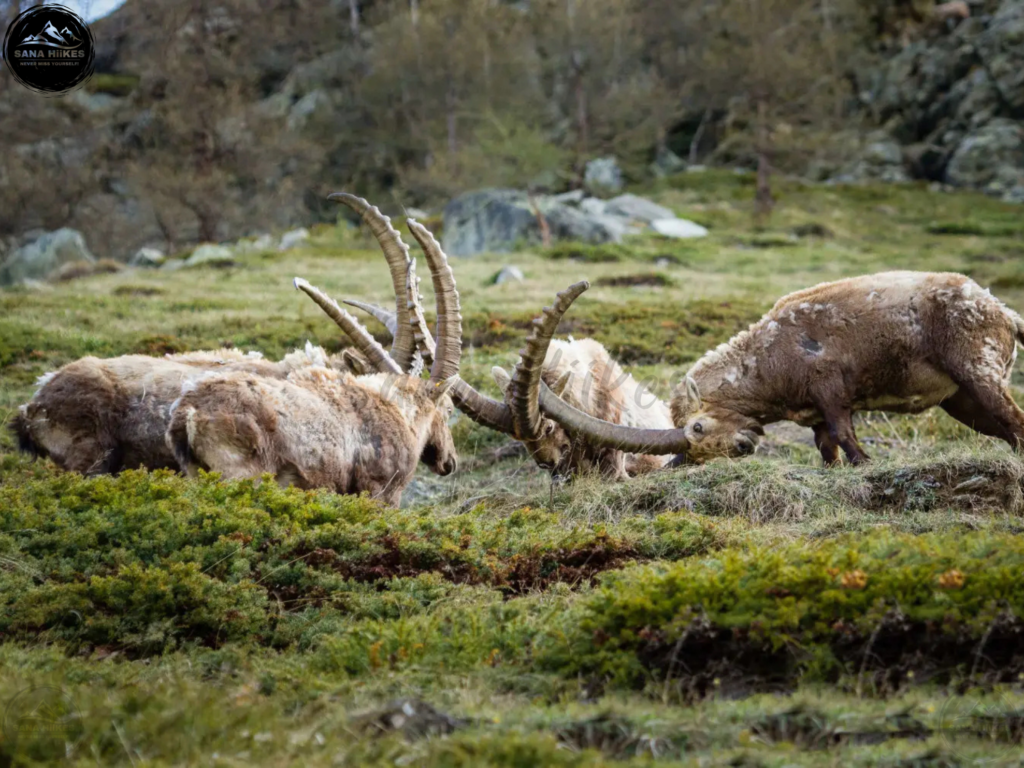
4. Local Cuisine and Where to Eat
Exploring Deosai National Park is not just about breathtaking landscapes and thrilling adventures—it’s also an opportunity to experience the unique flavors of the local Ladakhi and Tibetan-influenced cuisine. While Deosai itself has no permanent settlements or restaurants, travelers can find delicious traditional food in Skardu, Dras, Kargil, and Leh, which are the main towns near the park.
Traditional Ladakhi and Tibetan Dishes to Try
1. Thukpa – A Hearty Tibetan Noodle Soup
- A warm and flavorful noodle soup made with handmade wheat noodles, vegetables, and meat (chicken or mutton).
- Perfect for cold weather and a staple in Ladakhi households.
- Found in Leh, Kargil, and Skardu.
2. Momos – Delicious Tibetan Dumplings
- Steamed or fried dumplings filled with vegetables, mutton, or yak meat.
- Served with spicy chutney and a bowl of soup.
- Best enjoyed in Leh’s local eateries and teahouses in Kargil.
3. Skyu – Traditional Ladakhi Pasta Dish
- A comfort dish made with wheat dough dumplings cooked in a thick stew of root vegetables and meat.
- A must-try for those seeking authentic Himalayan flavors.
- Found in Leh and local guesthouses in Kargil.
4. Tingmo – Tibetan Steamed Bread
- A soft and fluffy steamed bread, often served with stews and spicy chutneys.
- Pairs well with dishes like Shapta (stir-fried meat with vegetables).
5. Chhang – The Traditional Barley Beer
- A locally brewed barley-based alcoholic drink, commonly consumed in the mountains.
- Best enjoyed in small traditional teahouses in Leh and Kargil.
6. Butter Tea (Gur Gur Chai)
- A salty tea made with yak butter, milk, and salt, known for its warming and energizing properties.
- Perfect to stay warm in Deosai’s chilly weather.
7. Apricot Jam and Ladakhi Bread
- Ladakh is famous for its organic apricots, and the jam is a must-try.
- Enjoy it with freshly baked Ladakhi bread, found in bakeries in Leh and Kargil.
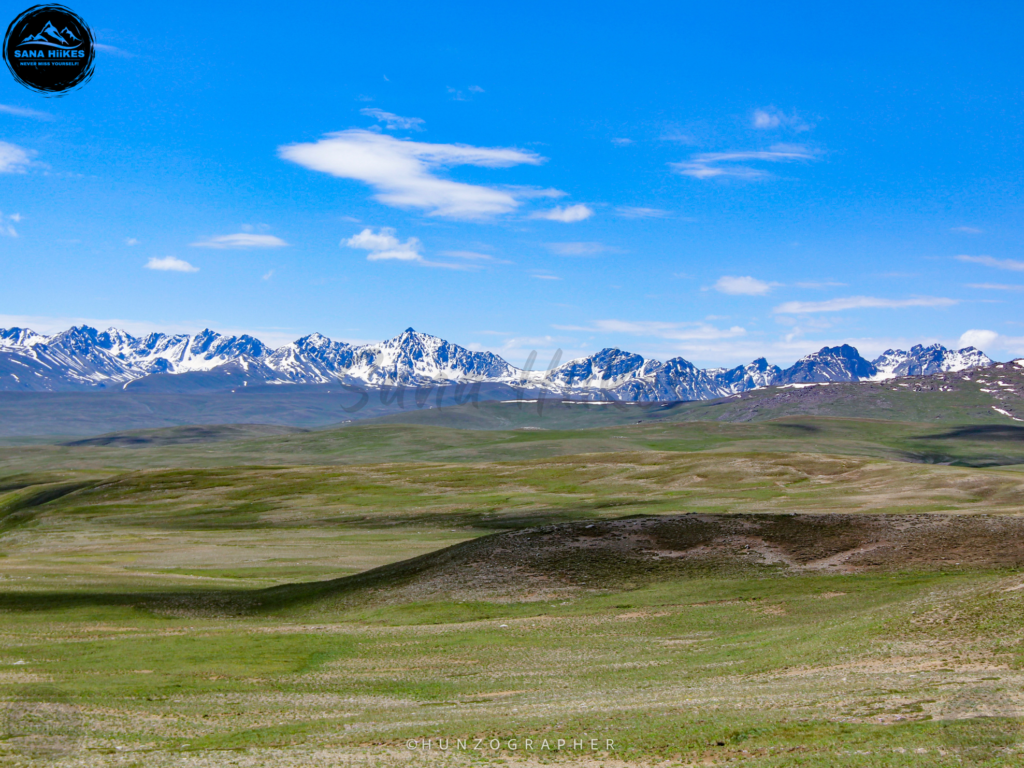
Where to Eat Near Deosai National Park
Since there are no restaurants inside Deosai National Park, travelers must carry their own food or stop for meals in nearby towns. Here are some of the best places to eat before or after your Deosai adventure:
1. Leh – The Best Place for Ladakhi Cuisine
- The Tibetan Kitchen – Famous for momos, thukpa, and traditional Tibetan dishes.
- Gesmo Restaurant – A great place for Ladakhi bread, butter tea, and bakery items.
- Bon Appetit – Serves fusion Himalayan cuisine with a great view of Leh town.
2. Kargil – A Mix of Kashmiri and Ladakhi Flavors
- Zomsa Restaurant – Known for Skyu, Chhang, and locally made apricot products.
- Poyen Restaurant – A good stop for mutton dishes and traditional Kargili food.
3. Dras – Quick Meals Before Entering Deosai
- Dras Valley Café – Serves hot chai, Maggi noodles, and local bread—ideal for trekkers.
- Gulfam Restaurant – A local favorite for simple but tasty Ladakhi meals.
4. Skardu (Pakistan Side of Deosai) – If Visiting from the Other Side
- Baltistan Restaurant – Famous for Chapshuro (meat-filled bread) and yak-based dishes.
- North Wind Café – Serves locally brewed apricot tea and fresh Balti bread.
Tips for Eating in and Around Deosai
- Carry dry snacks – Since there are no restaurants inside the park, bring dry fruits, energy bars, and biscuits.
- Try local teahouses – The best place to experience authentic Ladakhi food is in small local homes or teahouses.
- Pre-book meals in guesthouses – Many homestays and trekking lodges in Leh and Kargil offer homemade traditional meals.
5. Travel Tips and Essentials
Deosai National Park is a mesmerizing high-altitude plateau known for its breathtaking landscapes, diverse wildlife, and unspoiled wilderness. Whether you’re planning a trek, wildlife safari, or camping trip, it’s essential to be well-prepared to ensure a safe and enjoyable journey. Here’s a comprehensive guide on travel tips and essentials for visiting Deosai National Park.
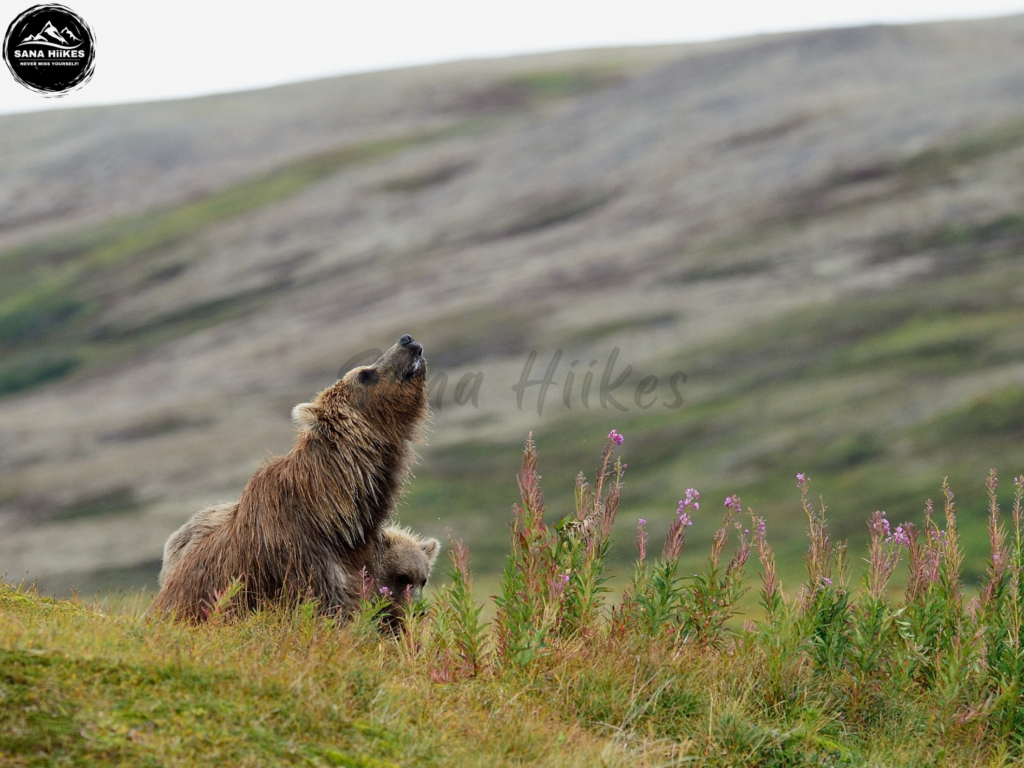
1. Best Time to Visit
- May to September is the ideal time to visit, as the park is free of snow and the weather is more favorable.
- The wildflowers bloom during July and August, creating a spectacular view.
- Winter (October to April) is not recommended for tourists due to extreme cold and heavy snowfall.
2. How to Reach Deosai National Park
Since Deosai is a remote location, reaching the park requires proper planning.
- From Leh, India:
- Fly into Leh Kushok Bakula Rimpochee Airport and take a road journey towards Kargil, Dras, and then Deosai.
- The journey involves rugged roads, so a 4×4 vehicle is recommended.
- From Skardu, Pakistan (if visiting from that side):
- Travelers usually take a jeep or a guided tour from Skardu to Deosai via Sadpara Lake.
3. Packing Essentials
Since Deosai National Park is at a high altitude (over 4,000 meters above sea level), proper packing is crucial.
Clothing:
- Layered Clothing – Temperatures can drop drastically, so pack thermal wear, fleece jackets, windproof jackets, and waterproof clothing.
- Gloves, Hats and Sunglasses – Protect yourself from the cold and strong UV rays at high altitudes.
- Comfortable Trekking Boots – Waterproof hiking boots are essential for walking on rough terrain.
Camping and Survival Gear:
- Tent and Sleeping Bag – If you plan to camp, bring a four-season tent and a -10°C sleeping bag.
- Torch and Power Bank – Electricity is scarce, so carry a solar charger or extra power banks.
- Portable Stove and Food – As there are no restaurants inside the park, bring your own food supplies and a camping stove.
Health and Safety:
- First Aid Kit – Include altitude sickness tablets, painkillers, antiseptic creams, and basic medicines.
- Water Purification Tablets – Natural water sources are available, but purification is advised.
- Sunscreen and Lip Balm – High UV exposure can lead to sunburn and chapped lips.
4. Acclimatization and Altitude Sickness Prevention
Deosai’s high altitude can cause altitude sickness (Acute Mountain Sickness—AMS). Here’s how to stay safe:
- Acclimatize in Leh or Skardu for a few days before heading to Deosai.
- Stay hydrated – Drink plenty of water to prevent dehydration.
- Avoid alcohol and heavy meals – These can worsen altitude sickness.
- Carry Diamox (altitude sickness medicine) – Consult a doctor before taking any medication.
5. Safety and Wildlife Precautions
Deosai National Park is home to Himalayan brown bears, snow leopards, and Tibetan wolves, so safety is key:
- Avoid trekking alone – Always travel in groups or with a guide.
- Do not leave food unattended – It may attract wildlife.
- Follow park rules – Respect the environment and avoid disturbing animals.
6. Permits and Entry Fees
Before visiting, ensure you have the required permits:
- Indian Travelers: Obtain necessary trekking permits from local authorities in Leh or Kargil.
- Foreign Travelers: Additional permits may be required for certain restricted areas.
- Entry Fees: Varies depending on the route and mode of travel (check with local tourism offices for the latest prices).
7. Connectivity and Emergency Contacts
- Mobile Network: There is limited to no network coverage in Deosai, so inform someone about your travel plans in advance.
- Emergency Helplines: Carry contact details of local police, medical centers, and park rangers.
- Satellite Phone: If traveling in a large group, a satellite phone can be useful in case of emergencies.
8. Responsible Travel and Leave No Trace
Deosai National Park is an ecologically sensitive area, so it’s important to follow eco-friendly travel practices:
- Respect local culture and wildlife – Do not disturb animals or pluck plants.
- Do not litter – Carry all waste back with you.
- Use biodegradable products – Avoid plastic and non-biodegradable materials.
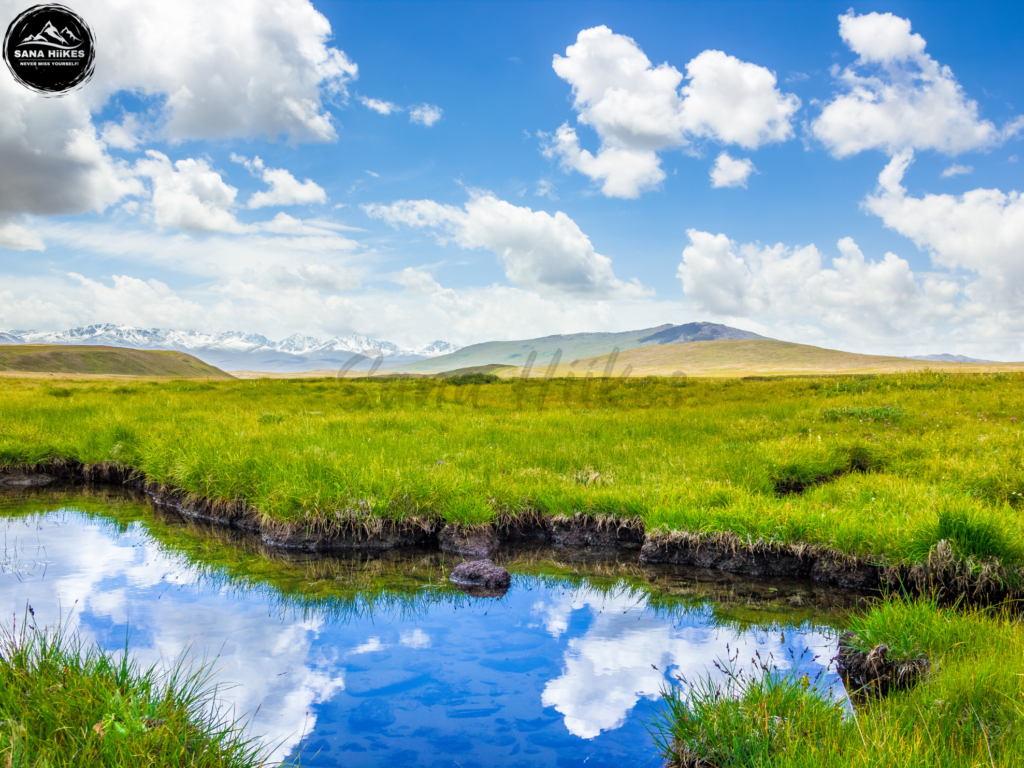
Final Thoughts
Deosai National Park is truly one of the last remaining wildernesses of the world, offering an untouched and surreal experience for nature lovers, adventure seekers, and wildlife enthusiasts. Known as the “Land of Giants,” this high-altitude plateau is a place where nature thrives in its purest form, making it a must-visit destination for those looking to explore the raw beauty of the Himalayas. One of the most fascinating aspects of Deosai is its pristine landscape, where vast rolling meadows, shimmering alpine lakes, and rugged mountain peaks create an almost dreamlike scenery. The seasonal bloom of wildflowers during the summer months transforms the park into a colorful paradise, making it a photographer’s delight. Whether you are trekking across its endless plains, camping under a star-lit sky, or simply soaking in the breathtaking views, every moment in Deosai feels like stepping into a different world.
Beyond its natural beauty, Deosai is also a sanctuary for rare wildlife. The park is home to the Himalayan brown bear, snow leopard, Tibetan wolf, Himalayan blue sheep, and golden marmots. Spotting these magnificent creatures in their natural habitat is an experience unlike any other. However, it is important for visitors to respect wildlife and maintain a safe distance to ensure both their safety and the well-being of the animals. For adventure enthusiasts, Deosai offers plenty of opportunities, from trekking and off-road jeep safaris to fishing and camping by the picturesque Sheosar Lake. The high-altitude terrain presents a challenge, but the rewards are truly worth it. The sense of accomplishment after completing a trek or witnessing the serene beauty of the landscape is an unforgettable experience.
However, traveling to Deosai comes with its own set of challenges. The harsh weather conditions, high altitude, and limited facilities require careful planning and preparation. Packing the right essentials, acclimatizing properly, and carrying necessary permits are crucial for a safe and comfortable journey. Additionally, since the region is an ecologically sensitive zone, travelers must follow responsible tourism practices, such as leaving no trace, avoiding plastic waste, and respecting local customs.
FAQs
Here are some frequently asked questions about traveling to Deosai National Park:
1. Where is Deosai National Park located in India?
2. What is the best time to visit Deosai National Park, Ladakh?
3. How can I reach Deosai National Park in Ladakh?
The nearest major town is Leh, which is well-connected by air and road.
From Leh, you can take a 4×4 vehicle to reach the park.
The journey involves off-roading and high-altitude travel, so it’s recommended to travel with an experienced driver or a guide.
4. What permits are required to visit Deosai National Park in India?
5. What wildlife can be spotted in Deosai National Park, Ladakh?
Himalayan brown bear (one of the rarest species in India)
Snow leopards
Tibetan wolves
Red foxes
Golden eagles and Himalayan griffons
6. Can I camp in Deosai National Park?
7. What are the main attractions in Deosai National Park, Ladakh?
Sheosar Lake – A breathtaking alpine lake at an altitude of over 4,000 meters.
Bara Pani and Kala Pani Rivers – Scenic riverbanks that are perfect for a peaceful retreat.
8. What should I pack for a trip to Deosai National Park?
Thermal wear and waterproof jackets (temperatures can drop suddenly).
High-energy food and snacks, as there are no shops in the park.
First aid kit and altitude sickness medication.
A good quality sleeping bag and tent if planning to camp.
9. Is Deosai National Park safe to visit?
Unpredictable weather (sudden snowfall or strong winds).
Altitude sickness (the park is located above 4,000 meters).
Wild animals, especially the Himalayan brown bear. It’s advisable to travel in groups.

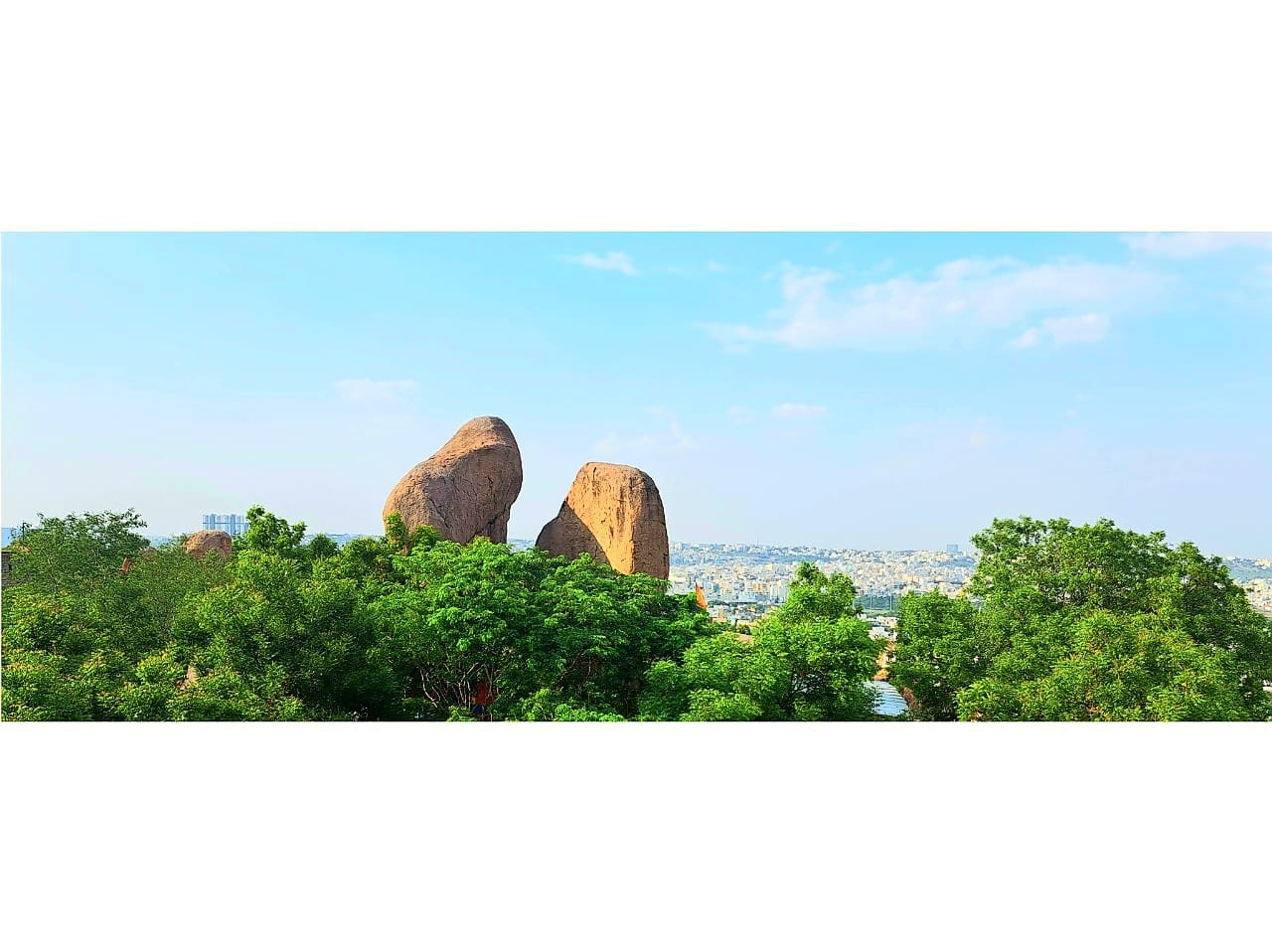
Leave a Reply